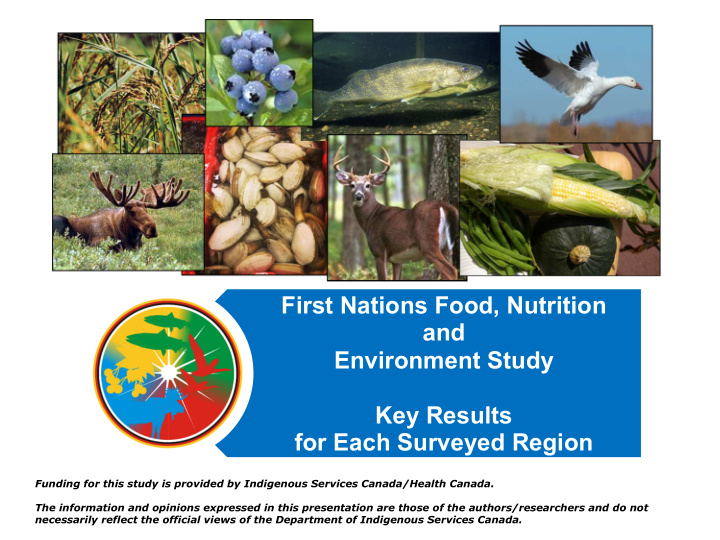



First Nations Food, Nutrition and Environment Study Key Results for Each Surveyed Region Funding for this study is provided by Indigenous Services Canada/Health Canada. The information and opinions expressed in this presentation are those of the authors/researchers and do not necessarily reflect the official views of the Department of Indigenous Services Canada.
Key Results for Ontario 26% reported having diabetes § 49% smoke § 38% were physically active § 24% said their health was very good or excellent § 85% were overweight/obese § 29% were food insecure § 43 grams of traditional food eaten, on average § Overall, traditional foods sampled had low levels of contaminants . § Elevated levels of lead were found in some food items: it is important to identify the sources. n Mercury exposure (as measured in the hair samples) was higher in northern communities , particularly in women of childbearing age . n Water quality, as indicated by the trace metals and pharmaceutical levels, is overall satisfactory , but close monitoring is needed as water sources and water treatment vary by First Nations.
Discussion Questions 1. How will the results of FNFNES be useful for other First Nations communities that did not participate in FNFNES? 2. How will the data collected by FNFNES be made available to your First Nation in a user- friendly way?
Recommend
More recommend